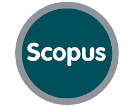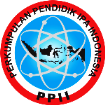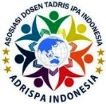Design and Trial of Probing Prompting-Based Electronic Learner Worksheet (E-LKPD) on Chemical Bonding Material
Abstract
ABSTRACT
The rapid development of digital technology in education necessitates innovative learning media that actively engage students. A preliminary study conducted at SMA Negeri 12 Pekanbaru indicated that chemistry instruction predominantly relies on printed materials and PowerPoint presentations, which contributes to low levels of student participation and understanding. This study aims to design and evaluate the validity and practicality of a Probing Prompting-based Electronic Learner Worksheet (E-LKPD) focused on chemical bonding, as well as to examine its potential impact on students’ learning engagement. Employing a Research and Development (R&D) approach following the Borg and Gall model, the study was limited to five stages: data collection, planning, development, initial field trials, and product revision. Participants included two expert validators, two chemistry teachers, and twelve students from class X MIPA 6. Data were analyzed descriptively to determine the percentages of validity and practicality. Validation by material and media experts yielded scores of 90% and 88.63%, respectively, indicating a very high level of validity. Practicality assessments by teachers and students resulted in scores of 86.25% and 84.89%, respectively, confirming that the E-LKPD is highly practical. The novelty of this research lies in the integration of the Probing Prompting learning model with a digital worksheet platform (Liveworksheet), enhancing interactivity and inquiry-based learning in chemistry. The developed E-LKPD provides an innovative medium for teachers to improve students’ conceptual understanding and foster self-directed learning in the digital era.
Keywords: electronic learner worksheet (E-LKPD), probing prompting, chemical bonding.
Full Text:
PDFReferences
Aini, N. A., et al. (2022). Development of problem-based learning-based LKPD in science subjects on force material. Journal of Basic Education, 6(2), 45–52.
Ariani, D., & Meutiawati, I. (2020). The effectiveness of LKPD in improving students’ learning outcomes, knowledge, attitudes, and skills. Indonesian Journal of Educational Research, 9(2), 115–123.
Dewi, A. K. (2023). The influence of interactive digital worksheets based on level of inquiry towards science process skills in elementary school. PEGEGOG: Journal of Education & Pedagogy, 6(1), 12–22. https://doi.org/10.5281/zenodo.7554248
Dewi, S., et al., (2022). Development of Auditory Intellectually Repetition (AIR)-Based Student Worksheets for Fourth Grade Science. Journal of Elementary Education. 6(1), 24-34.
Hidayah, A. N., Putri, S., & Rahmawati, L. (2020). Development of physics E-LKPD (electronic worksheets) using 3D Pageflip based on problem-based learning on balancing and rotation dynamics. Scientific Journal of Physics Education (COMPTON), 7(2), 36–43
Indriani, N & Lazulva, 2020. Design and Trial of Interactive Student Worksheets with a Scaffolding Approach on Salt Hydrolysis. Journal of Natural Science and Integration. 3(1), e-ISSN 2620-5092, 87-105.
Karsini, R., & Rotinga, P. S. (2020). Design and trial of probing prompting-based learner worksheets (LKPD) on periodic system of elements material. Journal of Chemical Education Research, 10(1), 53–63.
Karwati, N. P. R., Astuti, P., & Nurhayati, E. (2020). The effect of probing prompting learning model assisted by multimedia on science learning outcomes. Indonesian Journal of Education Research and Review, 3(2), 336–345.
Kurniawati, Y. (2020). Educational research methods. Pekanbaru: Kreasi Edukasi.
Marbun, E., Sitorus, M., & Tarigan, S. (2023). Development of chemistry electronic student worksheets using a problem-based learning model to improve students’ learning outcomes on stoichiometry. Proceedings of AISTEEL 2023. https://doi.org/10.4108/eai.19-9-2023.2340588
Marnesya, C. A. and E. (2020). Effectiveness of a Colloidal Systems Module Based on a Scientific Approach with Probing-Prompting Questions on Learning Outcomes. Journal of Multidisciplinary Research and Development, 2(4), 80–85.
Miterianifa, dkk. (2020). Analysis of Errors and Scaffolding in Problem Solving Processes On Colloid Topic for Class XI Senior High School. AIP Conference Proceeding 2296, 020103-1-020103-8; 108 https://doi.org/10.1063/5.0030457.
Ormancı, U. (2025). The effect of web-assisted guided inquiry approach on science education. Journal of Science Education and Technology, 34(2), 145–158. https://doi.org/10.1007/s10956-025-10238-9
Prastowo, A. (2014). Development of creative and effective learning media. Yogyakarta: Diva Press.
Purnama, A. (2020). The participation level of junior high school students in online learning during the COVID-19 pandemic. Scientific Journal of Education, 11(1), 102–108.
Ramadhan, M. R., & Dewi, S. A. (2023). Teachers’ readiness in implementing digital-based learning media for science education. Indonesian Journal of Science and Education Innovation, 7(1), 88–97. https://doi.org/10.5281/zenodo.7643021
Riduwan. (2013). Measurement scale of research variables. Bandung: Alfabeta.
Sastrawan, E., & Yenti, E., (2020). Design and Trial of Integrated Islamic Student Worksheets (LKPD) on Elementary Chemistry. JEDCHEM (Journal of Education and Chemistry), 2(1), 8-18.
Sugiyono. (2016). Quantitative, qualitative, and R&D research methods. Bandung: Alfabeta.
Sya’idah, F. A. N., Nurhidayati, S., & Rahma, A. (2020). The effect of blended learning model assisted by E-LKPD on salt hydrolysis material on student learning outcomes. Journal of Chemistry in Education, 9(1), 22–30.
Wahyuningsih, D. (2012). The Importance Of Pictures and Videos in Learning Media to Improve Student Understanding. Journal of Educational Development, 8(3), 188–195.
DOI: http://dx.doi.org/10.24014/jnsi.v8i2.32974
Refbacks
- There are currently no refbacks.

Journal of Natural Science and Integration
E-ISSN: 2620-5092 P-ISSN: 2620-4967
Published By:
Department of Science Education, Faculty of Education and Teacher Training,
State Islamic University of Sultan Syarif Kasim Riau, Indonesia
Mailing Address:
Jl. H.R Soebrantas Km. 15 No. 155
Kelurahan Simpang Baru
Kecamatan Tuah Madani, Pekanbaru, Riau, Indonesia
Email: jnsi.tadrisipa@uin-suska.ac.id
Indexed By:
Journal of Natural Science and Integration is licensed under a Creative Commons Attribution 4.0 International License.


_-_Copyy2.png)






.jpg)
.png)
.jpg)
.jpg)




